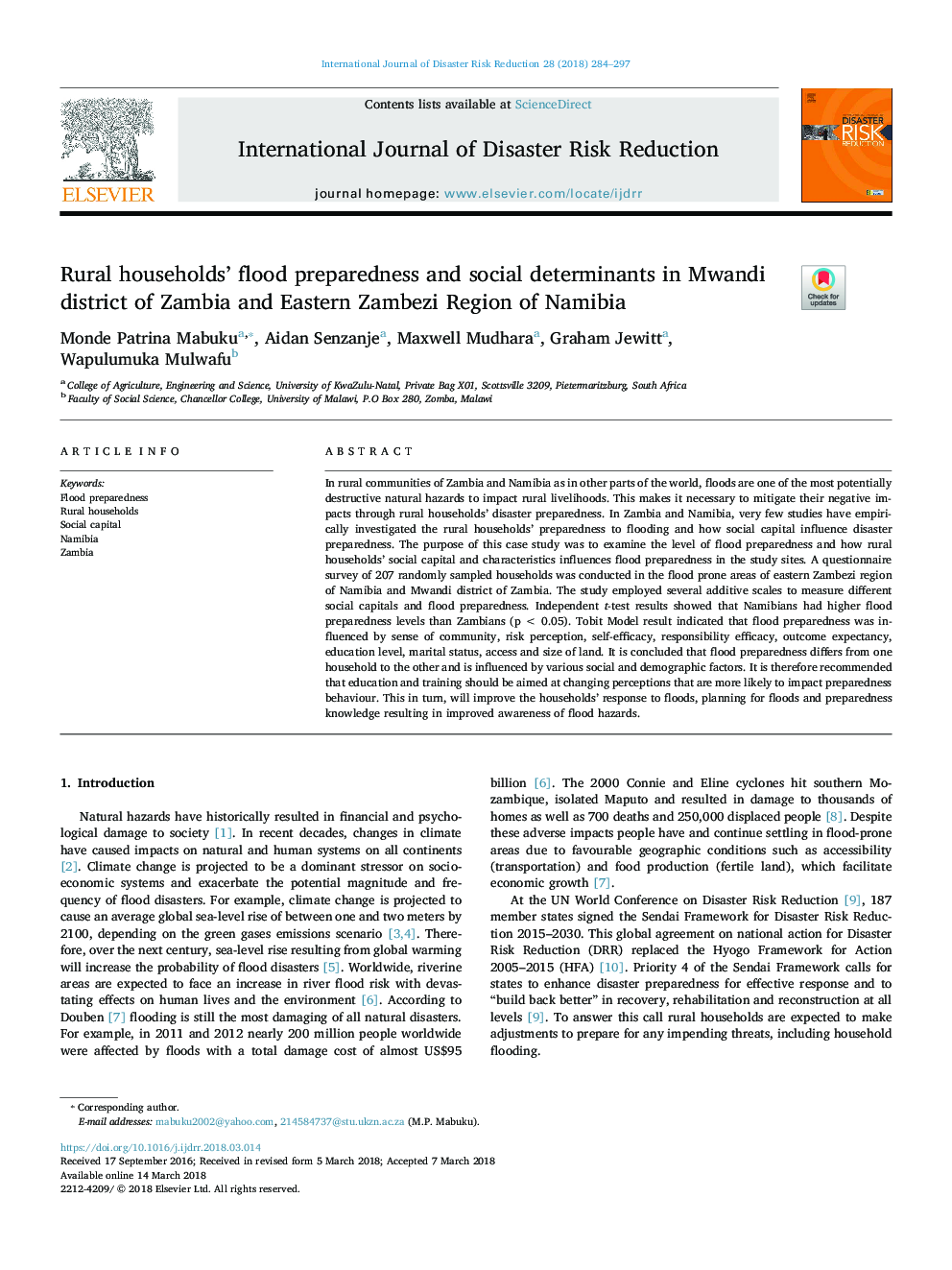| Article ID | Journal | Published Year | Pages | File Type |
|---|---|---|---|---|
| 7471570 | International Journal of Disaster Risk Reduction | 2018 | 14 Pages |
Abstract
In rural communities of Zambia and Namibia as in other parts of the world, floods are one of the most potentially destructive natural hazards to impact rural livelihoods. This makes it necessary to mitigate their negative impacts through rural households' disaster preparedness. In Zambia and Namibia, very few studies have empirically investigated the rural households' preparedness to flooding and how social capital influence disaster preparedness. The purpose of this case study was to examine the level of flood preparedness and how rural households' social capital and characteristics influences flood preparedness in the study sites. A questionnaire survey of 207 randomly sampled households was conducted in the flood prone areas of eastern Zambezi region of Namibia and Mwandi district of Zambia. The study employed several additive scales to measure different social capitals and flood preparedness. Independent t-test results showed that Namibians had higher flood preparedness levels than Zambians (pâ¯<â¯0.05). Tobit Model result indicated that flood preparedness was influenced by sense of community, risk perception, self-efficacy, responsibility efficacy, outcome expectancy, education level, marital status, access and size of land. It is concluded that flood preparedness differs from one household to the other and is influenced by various social and demographic factors. It is therefore recommended that education and training should be aimed at changing perceptions that are more likely to impact preparedness behaviour. This in turn, will improve the households' response to floods, planning for floods and preparedness knowledge resulting in improved awareness of flood hazards.
Related Topics
Physical Sciences and Engineering
Earth and Planetary Sciences
Geophysics
Authors
Monde Patrina Mabuku, Aidan Senzanje, Maxwell Mudhara, Graham Jewitt, Wapulumuka Mulwafu,
